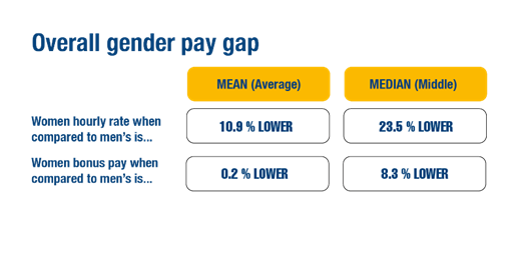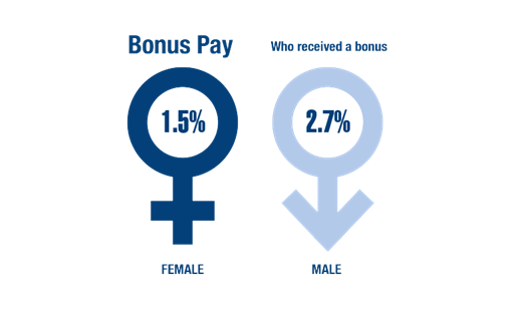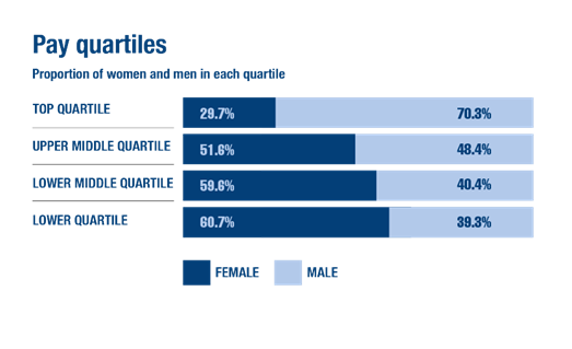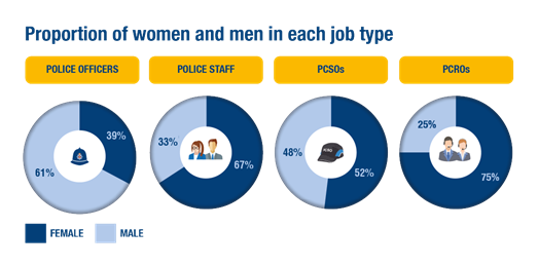Gender Pay Gap
What is the Gender Pay Gap?
The gender pay gap highlights the difference between the average hourly pay rates of men and women across the organisation. This is different to recognising equal pay, which involves comparing the salary of men and women undertaking the same role or work of an equal value. The gender pay gap aims to demonstrate the difference across the organisation as a whole.
Understanding our Gender Pay Gap
The gender pay is based on a snapshot of data taken as at 31 March 2023.

Figures on 31 March 2023. The mean gender pay gap is the difference in the average hourly pay for women compared to men. The median gender pay gap is the difference between the ‘middle’ hourly pay rate for women compared to men if you listed them separately from lowest to highest pay.
When compared to last years' data (snapshot taken of as 31 March 2022), our gender pay gap across the organisation has decreased, with our mean gender pay gap decreasing to 10.9% (from 12.8%), and our median gender pay gap decreasing to 23.5% from (25.2%).

Figures as at 31 March 2023. In 2022/2023, 256 people received a bonus payment, representing less than 5% of the workforce. A bonus is paid in recognition of performing work of an outstandingly demanding, unpleasant or important nature.
The gender pay gap also examines the number and amount of bonus payments made. As at 31 March 2023, 2.7% of men received a bonus, compared to 1.5% of women.

Pay quartiles involve sorting the individual hourly pay rates of each employee into order from highest to lowest. The top 25% of earners are then categorised in the top quartile, whilst the bottom 25% of earners are placed into the lower quartile. This allows us to see the gender split across the highest and lowest earners in the organisation more clearly.
There are various factors that have an impact on the size of the gender pay gap within Lancashire Constabulary. Our workforce consists of two main groups; police officers and police staff. Both groups have very different employment terms and conditions, with police officer roles typically having higher salaries, with 61% of these roles occupied by men. In contrast, police staff roles typically have lower salaries, and women made up 67% of this group as at 31 March 2023. As proportionally more women occupy police staff roles in the organisation, this results in them holding a greater proportion of the lower-middle and lower quartile jobs.
Due to the significant difference between police officers and police staff, we feel it is also important to calculate the gender pay for each of the groups separately.


The median gender pay gap has decreased slightly again for police officers on last year, decreasing to 0.81% in 2022/23 (from 1.59% in 2021/22). Female recruitment at Constable rank continues to be high, and again, numbers of women in higher ranks have increased slightly in 2022/23.
For police staff, the median gender pay gap has increased slightly, increasing to 5.52% (from 3.26% in 2021/22) which would be expected since the difference in hourly pay increased this year for PCRO and PCSO groups.
For the second time since reporting began, the gender pay gap for Police Control Room Operators (PCROs) is now just lower at 0.89%. Fewer women than previous years are paid at the higher end of the grade range and 88% of those operators who work less than 1FTE are women.
The individual breakdown of roles demonstrates that the gender pay gap is not as severe as it first appears, and that the difference for each group of staff can be somewhat explained by looking at the proportion of men and women currently undertaking those roles.
Further to this, we have identified additional factors that are influencing the overall gender pay gap for Lancashire Constabulary:
- There continues to be a lower proportion of women in higher paid roles and ranks which is reflected by the overall gender pay gap, although we will see an increase in women in more senior roles over the next few years as new officers and staff begin to progression within the organisation.
- Significantly more women have a flexible working arrangement, which in turn can reduce or even cease additional allowances that they would otherwise have been entitled to (e.g. unsocial hours and weekend working allowance). Across all of the individuals who had a flexible working arrangement as at 31 March 2023, over half are women.
- We offer police staff the ability to buy additional annual leave, which in turn further reduces hourly pay. In 2022/23, 85% of requests to purchase additional annual leave were made by women.
How are we addressing the Gender Pay Gap?
Our gender pay gap demonstrates that, whilst we’ve seen improvements in female representation in different ranks and roles, there is still plenty more to do. It also highlights the continuing need to identify the barriers that may prevent women from progressing throughout their careers and provide support to help them overcome these.
Our strategy to reduce the gender pay gap will continue to focus on the key areas discussed in previous years: recruitment, progression, training and data analysis. Our Valuing Difference and Inclusion Board meets on a regular basis to discuss and progress workforce diversity initiatives and will continue to provide support to positive action and our coaching and mentoring schemes, in order to encourage a greater number of women both to join the organisation, and seek career progression.
There are significant cultural and societal changes required to address some of the causes of the gender pay gap, and whilst this will take time, we are seeing positive improvements in these areas. We remain committed to our work to reduce the gender pay gap further and to support our ‘Plan on a Page’ Vision, Strategy and Values. We will do this by ensuring that everyone can be themselves at work and by attracting, retaining, and developing our people to maximise their potential. We aim to represent the communities we serve and will keep them safe by putting victims at the heart of everything we do and by delivering an outstanding service to the public and building confidence.

